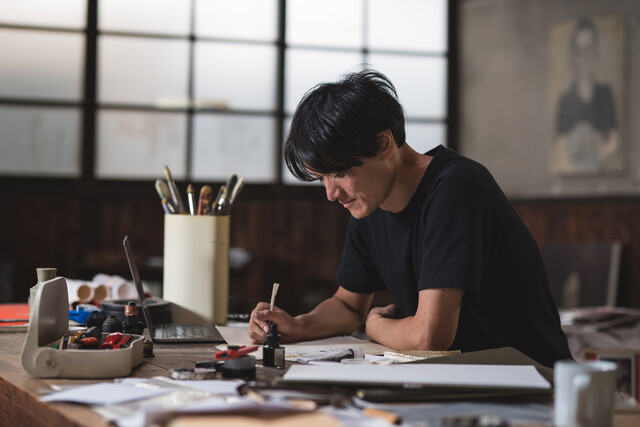INTRODUCTION
The inspiration of Greco-Roman style comes from the ancient period of history famous for myths featuring powerful gods and goddesses, the glory of gladiators, and impressive architecture. Ancient Greeks and Romans emphasized philosophy, education, and beauty- influences evident in their artwork and literature. These themes are substantial towards decorating a Greco-Roman style room. The style can be described as a natural, simplistic foundation with opulent detailing.
Popular attributions of Greco-Roman style include stately columns, detailed sculptures, and intricately scrolled iron work. There should be an air of formality and importance, for that reason dining rooms, living rooms, kitchens, and master bedrooms are top canvases for Greco-Roman style. Also popular are clean, stone covered bathrooms which take inspiration from ancient Roman baths.
In this article you'll learn:
- Top color choices for creating Greco-Roman style.
- Textures and fabrics most aligned with the decorating theme.
- Furniture styles and objects to consider utilizing.
- How to work with a formal-inclined style while maintaining an informal feel.
- Combining the Greco-Roman style with a world travel style.
*LEARN MORE To gain a better understanding of Greco-Roman style, brush up on history. Look for information pertaining to Greek and Roman architecture, clothing, and way of life.
COLORS
Due to its influences from both Greek and Roman styles, the Greco-Roman style can go two main directions in terms of color. Traditionally, Greco-Roman style features natural colors: browns, reds, and greens. The natural palette pays homage towards the appreciation for the earth and is reminiscent of Roman style. This classic palette feels comfortable, and it can be played up with deeper tones for more richness. Moving from richness to more casual, traditional Greek style favors a white base with pops of cool colors.
Water heavily influenced Greek culture from its cuisine to its color palette. Imagine the infamous Greek stark white buildings topped with deep blue domes. For a Greco-Roman style room leaning towards Greek style, utilize white tones with cool accents: Mediterranean blues, sea foam greens, and royal plums. The light colors strikingly contrast with the cool colors and pops of unexpected bright yellows can make for cheery spaces. Additionally, this palette lends itself well towards a Greco-Roman beach style.
Regardless of the palette chosen, Roman or Greek influenced, gold serves as an excellent accent color for most Greco-Roman style color schemes. It highlights that special regal opulence and formality associated with the style. Be sure not to go over the top, as with any accent color. Adding too much gold will draw attention away from the other aspects of the decor.
A final way to add more color is painting a wall mural. It can be as simple as a faux mosaic border around a doorway, or carefully detailed olive branches in the upper corners of the room. For a family room Greco-Roman style, add a few birds among the olive branches for whimsy. In some cases painted columns could add a much needed touch of whimsy when everything else is too formal. A word of caution on murals: proceed with care and balance, you don't want your elegant Greco-Roman dining room to end up looking like a casual Greek restaurant.
TEXTURES AND FABRICS
Greco-Roman style emphasizes natural textures and fabrics in conjunction with elegant detailing. Look for leather, linen, silk, and wool fabrics. On the windows, utilize light weight drapery in silk or linen to add a level of casual richness. Additionally, longer drapes will resemble columns. For a structural element, consider topping windows with pelmets. Pelmets are boxes placed at the top of windows, they can be painted or covered with fabric. Using a well carved pelmet will further evoke the structure associated with Greco-Roman style. Finally, to block out views and natural light, choose the aptly named Roman shades.
For floors, avoid rugs. Opt for stone and concrete flooring, and, of course, mosaic tile detailing. Wooden floors work well too, especially darker wooded floors. If the floors need to be broken up or slipping is a concern, utilize natural fiber rugs. The perfect natural fiber rug will contrast a stone or wooden floor well in texture and color.
A final word on stone. Stone, in the form of flooring, wall tiles, and stone objects, has three characteristics to keep in mind:
1) Color. The stone needs to correspond to the overall color scheme, whether they be dominant, subordinate, or accent colors. Oftentimes the color, to include marbling, will be derived from the stone's material.
2) Size. It depends on the stone's function. Larger tiles work best (and many be more cost-effective) to cover large floor or wall areas. Smaller mosaic tiles work great for borders or to make an impressive impact on the walls. Large stone pots work well in larger rooms, but can overwhelm smaller rooms.
3) Finish. When describing the finish of stone, you are describing the level of glossy or matte. The more matte, the more natural, while glossier evokes more opulence.
Consider not only the overall Greco-Roman style when choosing stone tile or objects, but the underlying styles, which will be discussed in depth later. A carefully chosen tile and stone object can really polish a room well.
Just like floors, furniture that fits into the Greco-Roman style should either be wood or stone. Look for weathered wood pieces particularly with carved detailing. If choosing a stone route, look for mosaic topped, or stone tile topped tables with scrolled iron legs. Many stores even offer tables featuring glass tops on columns or statues of lions. These add a sort of elegant whimsy, but be sure to balance with a down to earth piece to keep the room from becoming over-the-top.
When seeking seating, look for straight-lined sofas with no skirts to resonate the formal, tidy feeling associated with Greco-Roman. If working with a tight budget, try covering existing couches with form-fitting slipcovers and add a wool or fur throw blanket for a touch of formal luxury on the borderline informal seating. Think tight, streamlined, and tidy.
In a bedroom seek a straight lined head board. Light weight drapes hung from iron rods could resemble columns and offer a gauzy resemblance to fluttery Roman togas. Balance the feminine softness with a leather bench.
OBJECTS TO CONSIDER
The objects, finishing touches, and furniture within a room will fulfill roles of underlying themes. The overall style will be Greco-Roman, but is it masculine Greco-Roman? Or even modern, feminine Greco-Roman? The objects within a room play a dominant role in deciding what underlying themes will be represented.
Keep in mind all the objects listed are inspired by Greco-Roman style and likely can be used in any Greco-Roman room, but choosing certain types of objects will emphasize additional style themes. Here are some ideas for inspiration:
Natural Greco-Roman, where country or sea meets Greco-Roman:
- Tera cotta or stone pots filled with grasses, twigs, and dried greens
- Oversized wicker baskets
- Fishermen's nets
- Iron candlesticks or sconces
- Painted, glazed pottery
Whimsical Greco-Roman, a fun take on the serious style:
- Brightly colored bust or lion sculptures
- Olive leaf wallpaper
- A bright toned, crushed velvet love seat
Masculine Greco-Roman, a manlier take on the style:
- Leather pillows or even leather couches (however, be careful to avoid choosing too casual or Victorian style seating)
- Lamps with arrows, swords, or other weaponry for bases
- Antique bronze shields to hang on the walls
All these finishing touches amplify the Greco-Roman style, and if collected with a particular underlying theme can result in an even more interesting room. Be careful not to stuff a room with everything Greco-Roman, it'll likely end up looking haphazardly decorated and messy. A few well-chosen objects will tie the room together nicely.
Finally, keep in mind the color scheme when choosing objects. A terra cotta pot spray painted bright yellow will fit in most Greco-Roman style rooms. However the same pot spray painted violet might only fit into the Greek-inspired color scheme with white tones and cool colors.
STYLE LESSON- DISPLAYING OBJECTS WHILE AVOIDING THE MUSEUM LOOK
A common problem with Greco-Roman style is the ease in which the opulent details can become too formal. Formality tends to become a problem as Greco-Roman styled furniture and objects lend themselves towards museum status. Formality is appropriate in certain rooms or even during certain occasions, however for day-to-day, "normal" family rooms, formality makes a room less enjoyable, and therefore less likely to be utilized. Remember that being functional is a room's main goal, and an underutilized room is far from functional.
If you want a Greco-Roman style room, or any other formal-inclined room, but want to avoid a museum look, try these tips:
- Spray paint faux marble sculptures a surprising, fun color to decrease the formality.
- Eliminate tassels, especially gold tassels. For the suggested Greco-Roman furniture style, tassels can add an element of gaudiness.
- Trade in heavy curtains for light, sheer ones, especially if you've chosen a rich tone for the curtains.
- Make seating a priority. In family rooms add ottomans and oversized pillows, preferably in natural fabrics and brighter tones.
- Balance serious objects with whimsical ones, or natural colored objects with a few brightly colored surprises.
The common delineation for avoiding a museum look is balance, that's what makes the Greco-Roman style so wonderful: a balance of natural materials and opulent details and simplicity with intricacy. If a room feels too stuffy, identify the "formal" attributes and tone them down.
SURPRISING FIT- A GRECO-ROMAN WORLD TRAVELER
The two styles actually work very well together. All the natural elements associated with a traveller theme: weathered leather luggage, prized travel souvenirs, and faded maps easily fit into the natural yet showcase-worthy Greco-Roman style. One can go two routes: a classic, old-world feel or 21st century.
Classic, Old World Feel
For this version of the style, utilize the natural earth color scheme of reds, oranges, browns, and toned down greens. Opt for richer tones. Choose beautifully patterned silk curtains or throw pillows to boost the traveller aspect. Rich velvet or buttery leather seating adds comfortable luxury. Hang old maps and place bronze compasses on tables, then add a few bust sculptures and terra cotta pots to maintain the Greco-Roman style. Be sure to showcase personal travel trinkets, especially natural looking and colorful objects. For storage, search for weathered leather luggage and showcase personal travel photos in dark stained wood frames or unexpected dull gold frames. Be sure to add colorful mosaics on the walls, floors, or a piece of furniture.
The end look will be rich, classic, and boast both the Greco-Roman and travel style. Although filled with serious fabrics and elements, the room should be approachable from the well-worn elements and personal touches.
21st Century Greco-Roman Traveller
For an updated, brighter version, utilize a white tone base with bright contrasting blues, greens, and or violets. Instead of well-worn brown leather suitcases, opt for 1960s style white leather luggage. Maybe paint a few suitcases a bright blue for a pop of color. Use glass topped gold painted metal scrolled tables for an added level of opulence in line with Greco-Roman style. Again, include classic Greco-Roman sculptures but be sure they are bright white, one of the subordinate colors, or painted in a metallic accent color.
In regards to furniture, go lighter in fabric weight with heavier fabric pillows or throw blankets. Avoid going overboard with bright colors by keeping main furniture pieces in the white color family. Add texture to the floor with natural fiber rugs and mats. Include mosaic tiles when able.
Finish off the room with stone or white-washed terra cotta pots filled with succulents or dried olive branches. Use maps for a traveller feel, but choose brighter graphics or unique subjects like a framed New York City subway map.
When complete, the room should feel bright and encompass both Greco-Roman and traveller elements. This room style allows for more whimsy and play with color tone than the classic version, but both work equally well to show case a traveller's souvenirs.
SUMMARY
The Greco-Roman style works well for any room looking for a bit of formality balanced with natural elements. It pays homage to a time of thinkers and lovers of beauty and nature. Based on the colors and types of textures chosen, this style can reach the full spectrum between classic and modern, masculine and feminine, and pastoral and seafaring. Regardless of the underlying themes desired: a classic, masculine, pastoral Greco-Roman, or a modern, feminine, seafaring Greco-Roman, keep balance at the forefront or the design. Balance is key to achieving this look in both design components and achieving a sophisticated yet livable space.
Key elements in achieving a Greco-Roman style:
- Theme: A natural, simplistic foundation with elements of opulence and sophistication.
- Color: Aim for a natural palette: reds, oranges, browns for a classic Greco-Roman; White foundation with cool contrasts for heavily Greek-influenced Greco-Roman style. Both work well with gold accents.
- Textures and fabrics: Keep it natural with leather, linen, silk, and wool. Stone or wood flooring gets warmth from natural fabric rugs and color from mosaic tiled borders and designs.
- Furniture style: Think natural again with weather wood, stone topped tables, and scrolled wrought iron. For couches, choose simple, straight lined without skirts. Feel free to use a glass topped column or statue as a table, but balance the piece with down to earth pieces.
- Objects to pull it together: Finishing touches should amplify the main style, Greco- Roman, and add additional underlying themes. In any Greco-Roman room a few terra cotta or natural stone pots will work well, but adding a lamp with bronze arrows on the base will amplify a masculine feel in the room.
Words of caution:
- Avoid tassels to minimize stuffy, museum worthy looks.
- If painting murals, keep it simple. No need for a Greek-restaurant worthy depiction of an Athens street scene.
- Avoid conventional rugs, stick to natural fiber.
- Steer clear of rounded, plush seating.
- Add columns in the form of tables, but don't go overboard or the room might end up looking kitsch.
- Don't stress if you can't add a physical mosaic tile border to your rental living room fireplace, simply paint a mosaic tile design.
- Remember balance: simple with opulent, natural and weathered with shiny and sleek.

























